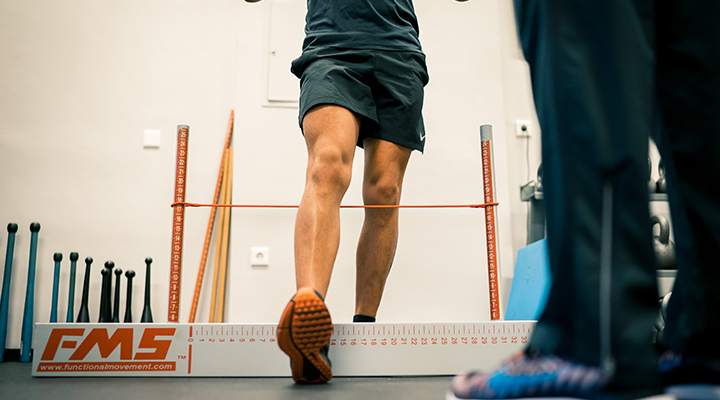Why the FMS
Posted on May 3, 2019 by American PT
When I started working as a physical therapist, I would always get the question “What can I do to prevent the pain from coming back?” I would usually respond by suggesting that they go to a gym and build up their muscles around their core. Unfortunately it wasn’t long before they were back in my practice because they hurt themselves. In some instances, it was the lack of the trainers understanding of what the patient needed. In other it was the general lack of where the patient most needed attention. This frustrated me and so I set off to find a way to find out what my patients needed instead of just giving exercises in the hope that they would help the patient.
That is when I found the Functional Movement Screen. It was created by physical therapist and athletic trainers in order to access the risk potential in athletes for injury. IT worked so well that it was carried over into the general public. The FMS uses 7 movements and 3 clearing test in order to evaluate the mobility, stability and complex movements of the whole body. With each test having a possible score of 3 and an overall score of 21 we can see where each person is on the scale and set the priorities of a corrective strategy. The great thing about the test is that it provokes the dysfunctions that otherwise would go unnoticed until it creates a problem. It also lets the client feel what is happening instead of just showing subjective findings that could or not be the source of a potential problem in the future.

The first test is the deep squat. It gives us an overview of how the client moves and how the rest of the test will unfold. Holding a stick over their head, the client will squat down as far as they can. This shows us if the client has enough mobility in the shoulders, hips and ankles and their stability in their stability in the core and spine. It also shows if the upper and lower body can move independently from each other.
Next we have the hurdle step which lets us access the one legged stand and balance. The ankle and hip mobility will be challenged. This test also lets us see the ability to accelerate in athletes by showing us the stability in the pelvic area. The Inline Lunge challenges the core and tells us if the client can extend in the hip while lowering the body into the lunge position while showing ample mobility in T-spine and in the shoulder.

The most important art of moving well is having enough mobility. Here we test the shoulders by seeing how far the client can bring their hands together behind their back. In order to see if it’s a problem in the spine, the shoulder or because of pain we use clearing test to point us in the right direction. After the shoulder we check the hip by having the client lay on their back and pull their straitened leg as far as they can towards their chest. Problems can stem from insufficient core stability, tight hamstrings or hip flexor. Because mobility is so important, if one of these test are limited then they are the first priority. A client can’t have stability if they can’t get into the position.

This brings us to the last tests, the push up and the rotary stability. These tests show the tension between the front and back of the rump and left and right side. The push up is pretty strait forward; can the client push themselves up off the ground while maintaining a strait back? This shows if the abdominal muscles can provide enough static strength. The rotary stabilityis by far the most frustrating test of the all. In the quadruped position (on all fours) the client is asked to stretch their arm and leg out on the same side, bringing knee and elbow together and the stretching them out again. Here we see if one side can hold the other side while executing the movement. All these tests lead back to the first deep squat and how it was performed.

As you can see the FMS can pick up on slight to glaring insufficiencies and asymmetries in our daily movements. This lets us first tackle what the client needs most instead of whatever exercise comes to mind or is most difficult. It allows us as professional movement specialists to make adjustments to the body in order to insure that the body works as a whole. This increases performance in athletes, increases the metabolic rate for those looking to achieve a healthy weight or just keep pain at bay. If you enjoyed this piece and would like to find out more or even get tested, then we would be happy to hear from you. Because it’s our mission to help you be the best you can be!